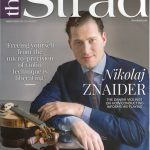The Strad magazine, January 2014 issue: In focus: Giuseppe Rocca, Torino 1939
Copyright © 2014 Alberto Giordano – The Strad magazine. All rights reserved
Giuseppe Rocca was born in Barbaresco, a small village not far from Alba in the Langhe hills of Piedmont, Italy. After serving in the army, he began working as a baker and pasta maker in Alba in 1828. The circumstances by which Rocca became a violin maker are obscure: after the death of his first wife in 1834, he left Alba and settled in Turin, working for Giovanni Francesco Pressenda. He married again in 1837 and soon afterwards set up on his own, as he tried to surmount his financial difficulties.
Rocca’s life was marked by debt and mourning: his second wife died in 1842 and he married twice more, the last time in 1851 in Genoa, where he was looking for new opportunities. He also tried to keep his business going in Turin, travelling between the cities for some time and participating in national and international exhibitions – with varying success. Rocca’s life ended tragically in Genoa, when he was found dead in a well. Police considered his death accidental.
Rocca’s work varied considerably during his career: in the first few years he used Pressenda’s models, though with his own personal interpretation. He also made some violins for Pressenda in the white after leaving the workshop. After meeting violin dealer and collector Luigi Tarisio in around 1842, he started working on just two violin models – the 1716 ‘Messiah’ Stradivari and the 1742 ‘Alard’ Guarneri ‘del Gesù’. The quality of his work in his later period is sometimes less even, as he used inferior wood and varnish of lesser quality in the texture.
Rocca did not train a single maker: even his son Enrico cannot be considered his pupil.
Form and construction
This 1839 violin is in beautiful, fresh condition, and still bears its original neck, fingerboard and some of the fittings. Made using an internal mould, it clearly shows Pressenda’s influence: the interior displays great care in the workmanship, no tool marks are visible, the blocks and linings are made of willow, and the linings are set into the centre-blocks with precision.
On the outside, one can notice the purfling set on the rib joint at the button, and the lower one-piece ebony top nut that was inserted in the sides. The ivory end-button is original. The arching is 15mm high at the front and 14.5mm at the back. There are no straight lines in the profile view of the arching – the curve runs gently and appears to be carved with great confidence.
Purfling
The purfling is made of ebony and maple. It is set 3.8mm from the border and runs in a single piece in the upper and lower bouts. The corners have long extensions.
F-holes
The flanks of the f-holes are slightly undercut. The scoop of the palette is quite deep and the lower holes show a delicate border around the hole.
Pegbox
The inside of the pegbox shows inner chamfers cut with a chisel and barely rounded. The wall down from the top nut bears Rocca’s ‘GR‘ autograph, marked with the same ink of the black line that decorates the scroll profile. A thin centre line is visible on both the rear and the front.
Varnish
The varnish is of a thick, soft and rich texture. It is laid on to an attractive ground, well gripped, deeply coloured and pleasantly crackled. At some points on the front, the penetration into the wood grain is visible.
- Back length 354mm
- Stop length 195mm
- Upper bouts 168mm
- Middle bouts 110mm
- Lower bouts 209mm
All photos Marco Ricci — Genova





